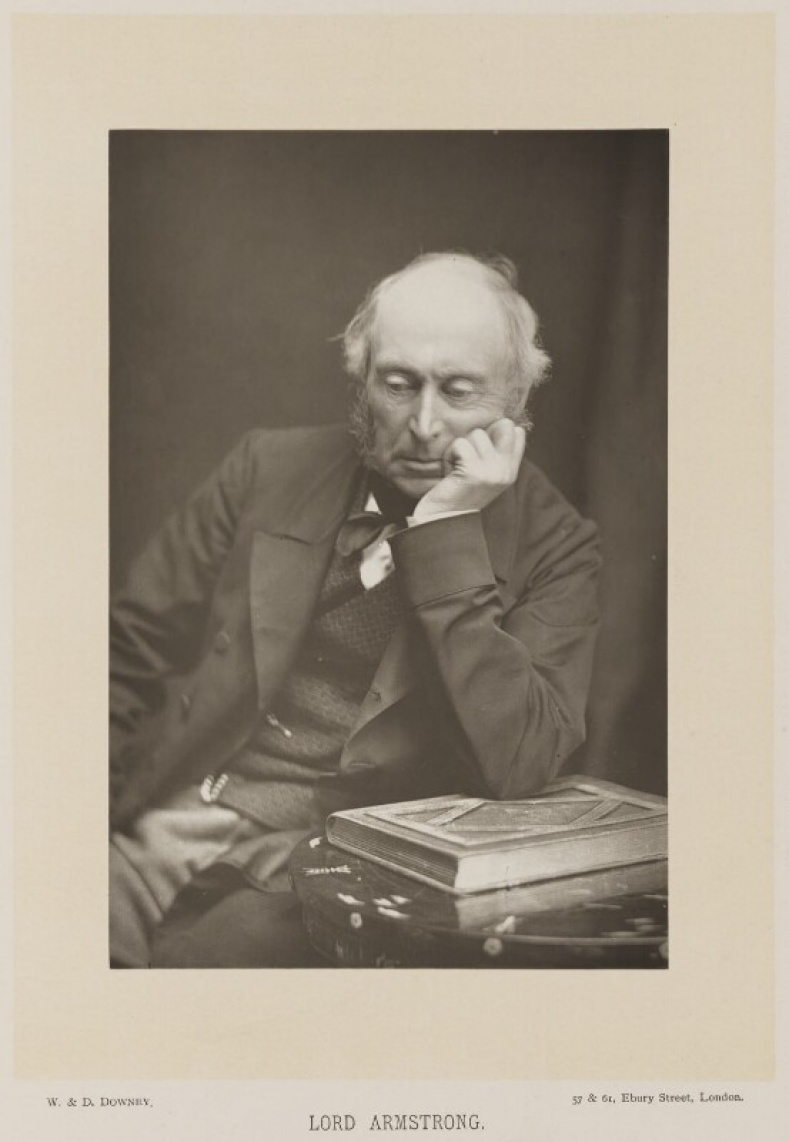

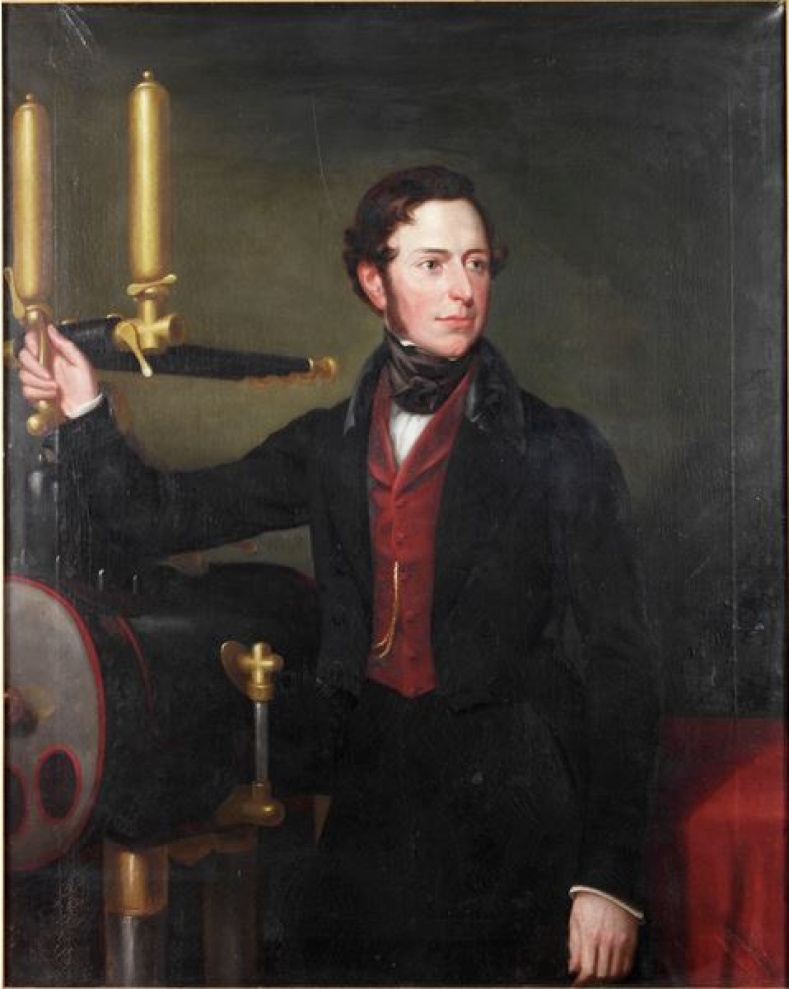
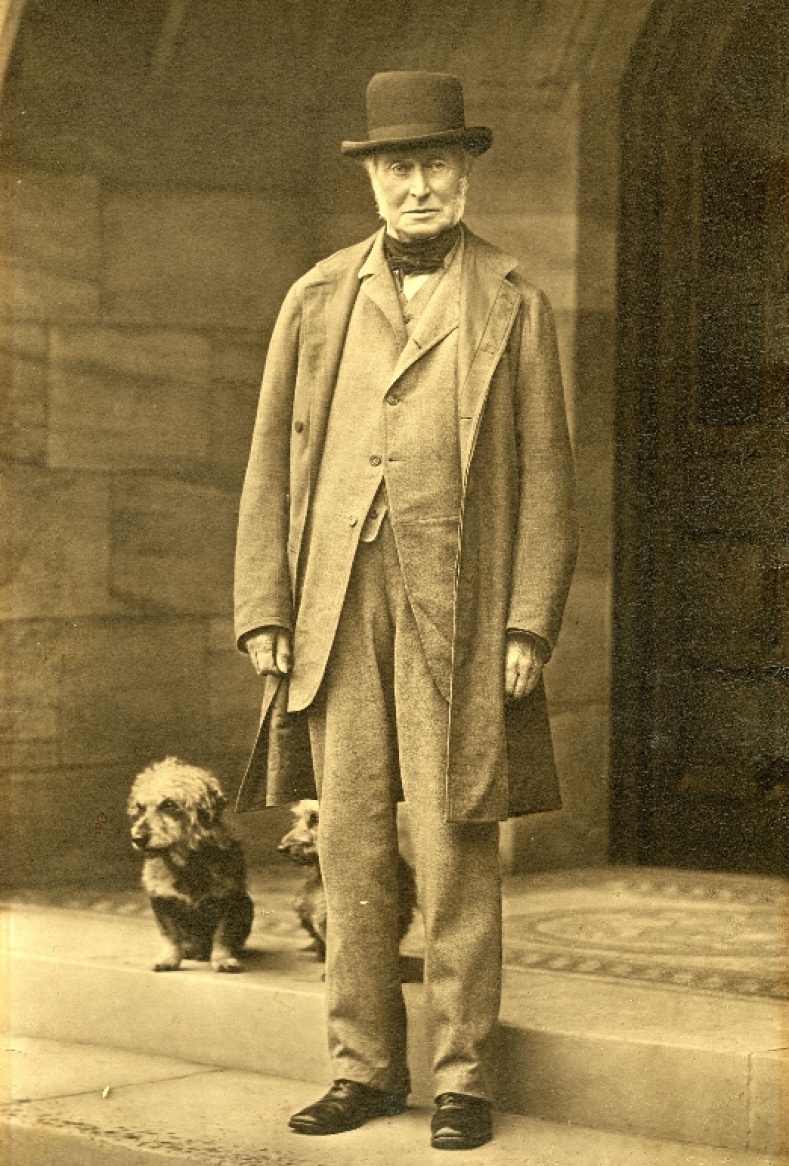
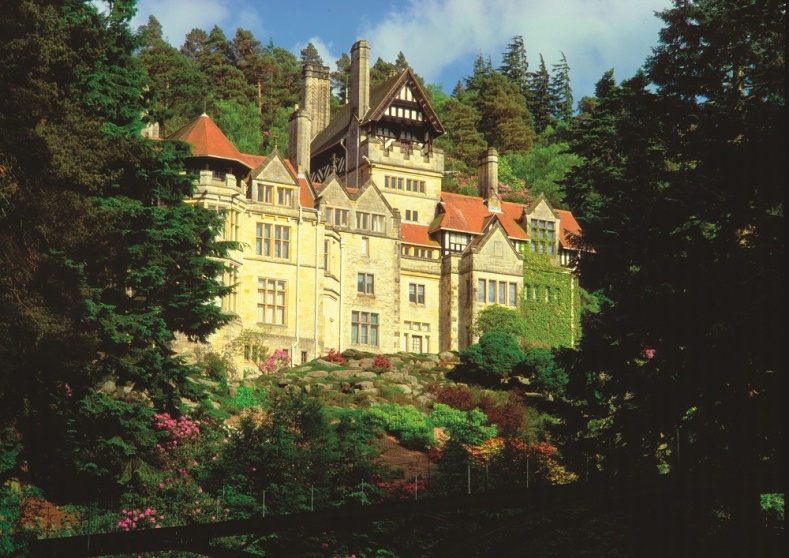
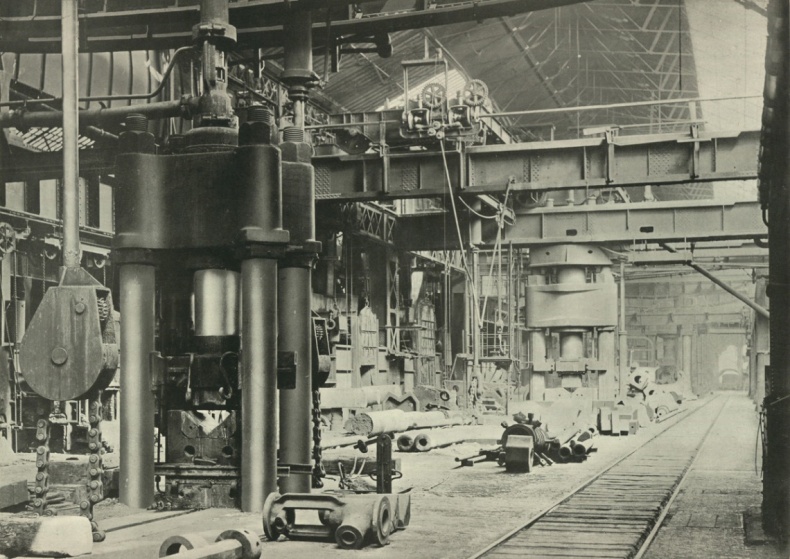
Armstrong, Baron William George
1810-1900
Engineer
William George Armstrong, 1st Baron Armstrong, was an English industrialist who founded the legendary Armstrong engineering and armaments business on Tyneside. His achievements brought him wealth and fame and put Newcastle and the North East of England firmly on the science and engineering map. Later in life, he became a philanthropist, notably helping to establish the Royal Victoria Infirmary and what we now know as Newcastle University.
Armstrong was born in Newcastle upon Tyne. He was the only son of William Armstrong, a corn merchant and local politician. Armstrong Senior wanted his son to enter the legal profession and, upon leaving school, Armstrong took articles under the Newcastle solicitor and family friend, Armorer Donkin, becoming a partner in the firm in 1835.
From an early age, Armstrong had a fascination with all things scientific and mechanical. This continued into adulthood and a turning point in his life came in 1835 when, during a fishing trip to Dentdale in Yorkshire, his attention was captured by what he recognised as an inefficient use of water in an over-shot water-wheel. Over the next ten years, Armstrong devoted his spare time to developing the effective use of water as a source of power. His breakthrough came with the successful installation of three hydraulic cranes commissioned to his design on Newcastle quayside. With financial support from Donkin and other members of the Newcastle business elite, this led directly to the formation of W.G. Armstrong & Co. in 1847 on a 5.5-acre site at Elswick, at first specialising in cranes but moving quickly into bridge construction and other related fields.
In the 1850s, Armstrong moved into armaments production when he developed a new type of field gun in response to the high loss of life experienced during the Crimean War. He was subsequently commissioned to supply the War Office with Armstrong Guns. He wrote a report entitled Construction of wrought-iron rifled guns adapted for elongated projectiles which outlined what would become the essential features of projectiles for the next hundred years. He received a knighthood for his services.
In 1863, Armstrong purchased land near Rothbury and began the construction of his country residence, Cragside, where he would increasingly spend his time as he retired from the day-to-day running of his business. These later years of Armstrong's life saw his love-affair with electricity blossom when, in keeping with his instinct for innovation, Cragside was the first house in the world to be lit using hydroelectric power and the first to be lit by Joseph Swan's newly-invented incandescent light bulbs. He experimented further with electricity and in 1899, just a year before his death, he published a preface to an article called Electric Movement in Air and Water.
Armstrong had become a nationally and internationally renowned figure, and, sharing his success, he became a great benefactor to Newcastle. He gifted Jesmond Dene to the City in 1884 together with its house, banqueting hall, Armstrong Bridge and Armstrong Park. He was one of the main subscribers to the Newcastle College of Physical Science, renamed after him in 1904, as part of the University of Durham. In 1871, he donated £600 pounds in six annual instalments (around £67,000 in today’s money) towards its formation. The College was at the heart of what became Newcastle University when separated from Durham in 1962. On a much larger scale, Armstrong gave £11,500 towards the building of Hancock Museum of Natural History, a sum equivalent to over £1.2m in 2017, which opened in 1884, and which in 2009, following extensive refurbishment, was renamed the Great North Museum. Armstrong made substantial donations to seven hospitals, including the Royal Victoria Infirmary (RVI), and following his death, in 1904, his nephew William Watson-Armstrong, inheritor of the Armstrong fortune, gave £100,000 (equivalent to £10.9m in 2017), towards the rebuilding of the hospital on land across the road from Armstrong College.
William Armstrong was raised to the peerage as Baron Armstrong of Cragside in June 1887. When he died in 1900 he left an estate worth £1.5m (£164m in today’s money). He was buried in Rothbury, in a simple grave by the river Coquet. He left an enduring legacy as a result of not only his scientific work but his philanthropy. He is widely remembered as a towering figure of the Victorian era.
References
Bastable, M.J. (2004). Arms and the State: Sir William Armstrong and the Remaking of British Naval Power, 1854-1914. Burlington: Ashgate.
Heald, H. (2010). William Armstrong: Magician of the North. Newcastle upon Tyne: Northumbria Press.
Linsley, S.M. Armstrong, William George, Baron Armstrong (1810–1900). Oxford Dictionary of National Biography. Available here (Accessed: 04/07/2017).
Newcastle University Library Special Collections. (2018). Lord Armstrong. Available here (Accessed 04/07/2018).
Wikipedia. (2018). William Armstrong, 1st Baron Armstrong. Available here (04/07/2018).